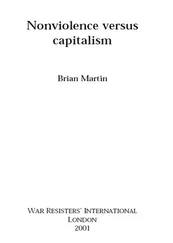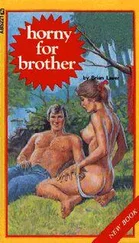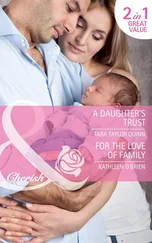One who has done so is David Paterson, “Peace and engineering,” in Sandra Sewell, Anthony Kelly and Leonie Daws (eds.), Professions in the Nuclear Age (Brisbane: Boolarong Publications, 1988), pp. 201-212.
Many of these ideas come from engineers at the University of Wollongong interviewed by Mary Cawte and me.
Methods used by farmers to survive the impact of warfare are relevant here. For example, in Angola farmers intensively cultivated tiny plots, grew the very hardy grains millet and sorghum, took up hunting and fishing, saved seeds to sow the next year’s crop and adopted mutual aid systems for planting, weeding and harvesting. Although some of these practices, such as choosing hardy grains and saving seed, reduced yields, they were more resilient in times of intense threat and stress. See David Sogge, Sustainable Peace: Angola’s Recovery (Harare, Zimbabwe: Southern African Research and Documentation Centre, 1992), pp. 39-41. I thank Rebecca Spence for providing this reference.
Ivan Illich, Energy and Equity (London: Calder & Boyars, 1974), argued that in an equitable society, transport speeds should be no greater than about 15 miles per hour. He favourably referred to the example of a slow-but-efficient goods vehicle used in Mexico. Although Illich’s strict limit on speeds can be criticised, his basic analysis is relevant to the task of building a transport system for nonviolent struggle. Arguably, an equitable system, in which no segment of the population obtains transport privileges at the expense of others, is likely to promote the sort of community solidarity so necessary for waging nonviolent struggle. As well as fostering solidarity, is it also the case that “slow is beautiful” when it comes to developing a transport system resilient against attack?
Nick Lewer, Physicians and the Peace Movement: Prescriptions for Hope (London: Frank Cass, 1992).
An excellent compendium of materials is Carola Eisenberg and Susannah Sirkin (directors), Human Rights and Medicine: The Uses of Medical Skills in Documenting Abuses and Treating the Victims (conference proceedings) (Department of Social Medicine, Harvard Medical School and Physicians for Human Rights (100 Boylston Street, Suite #702, Boston MA 02116, USA), 10-11 April 1992). These proceedings include, among others, copies of the following publications: Clyde Collins Snow, Eric Stover and Kari Hannibal, “Scientists as detectives: investigating human rights,” Technology Review , Februrary/March 1989, pp. 43-51; Paul Wise, Nancy D. Arnison, Gregg Bloche and Jane G. Schaller, “Operation Just Cause : a case study in estimation of casualties after war,” PSR Quarterly , Vol. 1, No. 3, September 1991, pp. 138-144; Anne E. Goldfield, Richard F. Mollica, Barbara H. Pesavento and Stephen V. Faraone, “The physical and psychological sequelae of torture,” Journal of the American Medical Association , Vol. 259, No. 18, 13 May 1988, pp. 2725-2729; Kenneth S. Pope and Rosa E. Garcia-Peltoniemi, “Responding to victims of torture: clinical issues, professional responsibilities, and useful resources,” Professional Psychology: Research and Practice , Vol. 22, No. 4, 1991, pp. 269-276.
Veli Lök, letter to Brian Martin, October 1994.
An excellent practical reference is Hans Husum, Swee Chai Ang and Erik Fosse, War Surgery Field Manual (Penang: Third World Network, 1995). The authors provide information for emergency operations in forward clinics and argue that in war zones surgery can be done by people without formal medical qualifications.
Robert Burrowes suggested the points about diet and alternatives to conventional medicine.
Miriam Solomon, letter to Brian Martin, 20 January 1992.
A penetrating examination of this area is given by Kelvin W. Willoughby, Technology Choice: A Critique of the Appropriate Technology Movement (Boulder: Westview Press; London: Intermediate Technology Publications, 1990). See also Godfrey Boyle, Peter Harper and the editors of Undercurrents (eds.), Radical Technology (London: Wildwood House, 1976); David Dickson, Alternative Technology and the Politics of Technical Change (London: Fontana, 1974); Romesh K. Diwan, “Total revolution and appropriate technology,” Gandhi Marg, Vol. 4, No. 7, October 1982, pp. 631-645; Romesh Diwan, “Appropriate technology: political and economic obstacles,” Gandhi Marg, Vol. 5, No. 2, May 1983, pp. 65-74; Ivan Illich, Tools for Conviviality (London: Calder & Boyars, 1973); George McRobie, Small is Possible (London: Jonathan Cape, 1981); Willem Riedijk, Technology for Liberation: Appropriate Technology for New Employment (Delft: Delft University Press, 1986).
Ken Darrow and Mike Saxenian (eds.), Appropriate Technology Sourcebook: A Guide to Practical Books for Village and Small Community Technology (Stanford, CA: Volunteers in Asia, 1986), p. 7.
These examples are taken at random from Darrow and Saxenian, ibid.
Johan Galtung, Peter O’Brien and Roy Preiswerk (eds.), Self-Reliance: A Strategy for Development (London: Bogle-L’Ouverture, 1980).
This chapter is adapted from Helen Gillett, Brian Martin and Chris Rust, “Building in nonviolence: nonviolent struggle and the built environment,” Civilian-Based Defense, Vol. 11, No. 3, Fall 1996, pp. 1, 4-7, which also describes military influences on the built environment.
Kathryn McCamant, Cohousing: A Contemporary Approach to Housing Ourselves (Berkeley, CA: Habitat Press, 1988).
Donald Appleyard, Livable Streets (Berkeley: University of California Press, 1981); Ivan Illich, Energy and Equity (London: Calder and Boyars, 1974); K. H. Schaeffer and Elliot Sclar, Access for All: Transportation and Urban Growth (Hasmondsworth: Penguin, 1975).
Edmund P. Fowler, Building Cities that Work (Montreal: McGill/Queen’s University Press, 1992). Fowler discusses a number of issues along these lines; see also Jane Jacobs, The Death and Life of Great American Cities (New York: The Modern Library, 1969).
Colin Ward, Connexions: Violence — Its Nature, Causes and Remedies (England: Penguin Education, 1970).
Gerda R. Wekerle and Carolyn Whitzman, Safe Cities: Guidelines for Planning, Design, and Management (New York: Van Nostrand Reinhold, 1995). I thank Nichole Dusyk for suggesting this reference. Designing the built environment to reduce crime does not preclude efforts to address poverty, discrimination and social policies that create crime.
John F. C. Turner, Housing by People: Towards Autonomy in Building Environments (New York: Pantheon Books, 1977).
Edmund P. Fowler, Building Cities that Work (Montreal: McGill/Queen’s University Press, 1992).
See Brian Martin, “Critique of nuclear extinction,” Journal of Peace Research , Vol. 19, No. 4, 1982, pp. 288-300; Brian Martin, “How the peace movement should be preparing for nuclear war,” Bulletin of Peace Proposals , Vol. 13, No. 2, 1982, pp. 149-159 (revised versions of these articles appear in Brian Martin, Uprooting War (London: Freedom Press, 1984), chapters 15 and 16); Brian Martin, “Politics after a nuclear crisis,” Journal of Libertarian Studies , Vol. 9, No. 2, Fall 1990, pp. 69-78. See also Michael Curry, “Beyond nuclear winter: on the limitations of science in political debate,” Antipode , Vol. 18, No. 3, 1986, pp. 244-267; Barry Richards, “Civil defence and psychic defence,” Radical Science 15 , 1984, pp. 85-97.
Читать дальше












